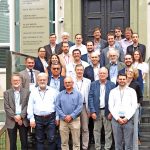A transatlantic initiative
Since 2014 the NGNP Industry Alliance (USA) and the NC2I (Europe) have joined forces to promote and work on the industrial development of HTGR cogeneration.
A shared vision between the USA and Europe
The GEMINI Initiative is based on a simple, transparent, accountable and strong international agreement between American and European research organisations and industry to work with their respective governments to carry out the design and regulatory requirements for the development of the first commercial High Temperature Gas-cooled Reactor (HTGR).
The key idea is to combine the best engineering and research talents from both parts of the Atlantic, as well as mutualise industrial capabilities. Moreover, the GEMINI Initiative’s objective is to reduce the costs for each partner involved and make the construction projects more attractive for investors.
The Next Generation Nuclear Plant Industry Alliance and the Nuclear Cogeneration Industrial Initiative are official authorities in charge of the review and approval processes required in the GEMINI Initiative.
MORE INFORMATION
GEMINI Vision Document
GEMINI+ project
Building a European economy with net-zero GHG emissions by 2050
Approximately 60% of the final energy consumed in Europe is produced from the combustion of fossil fuels. Main uses are for process heat, transportation fuels and residential heating.
The Nuclear Cogeneration Industrial Initiative of SNETP has identified the suitability of HTGR for the efficient and safe cogeneration of low-carbon electricity and process steam, and the large market potential.
Learn more about how nuclear cogeneration can help mitigate climate change further below.
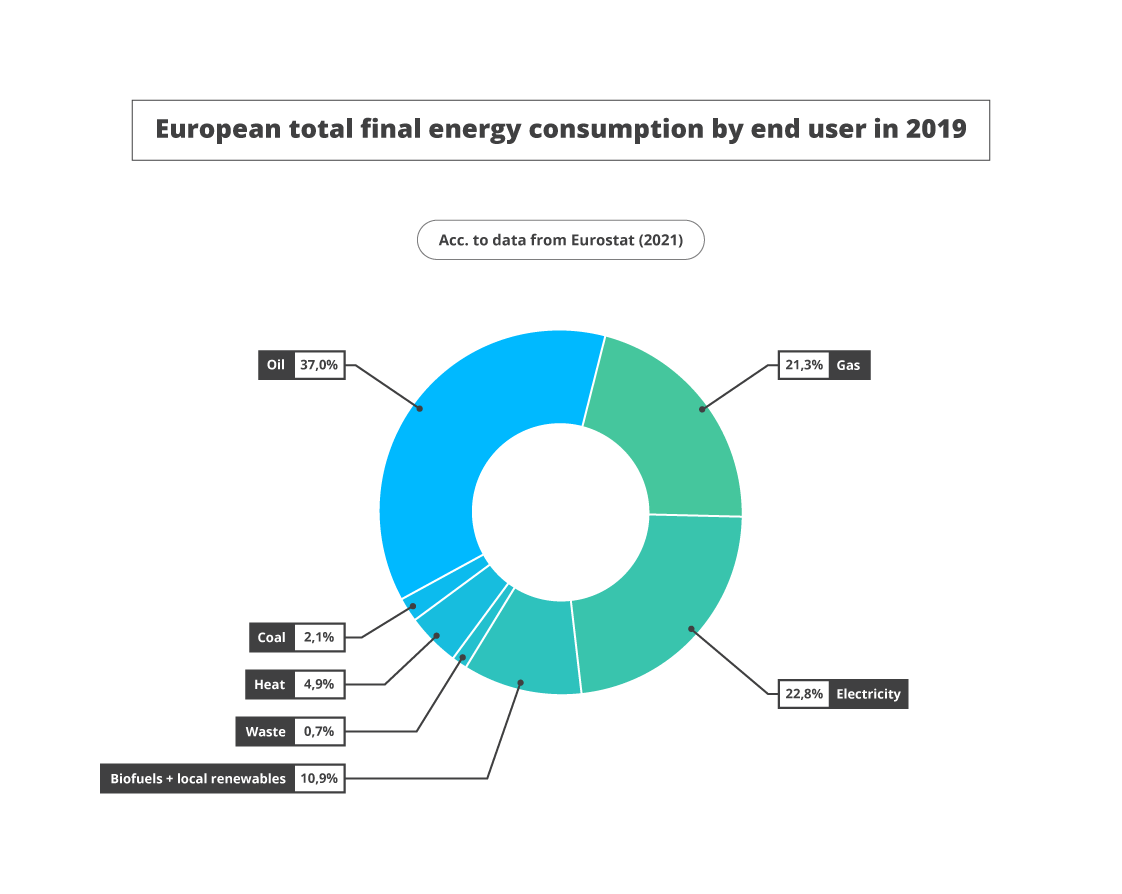
The EU market for process heat
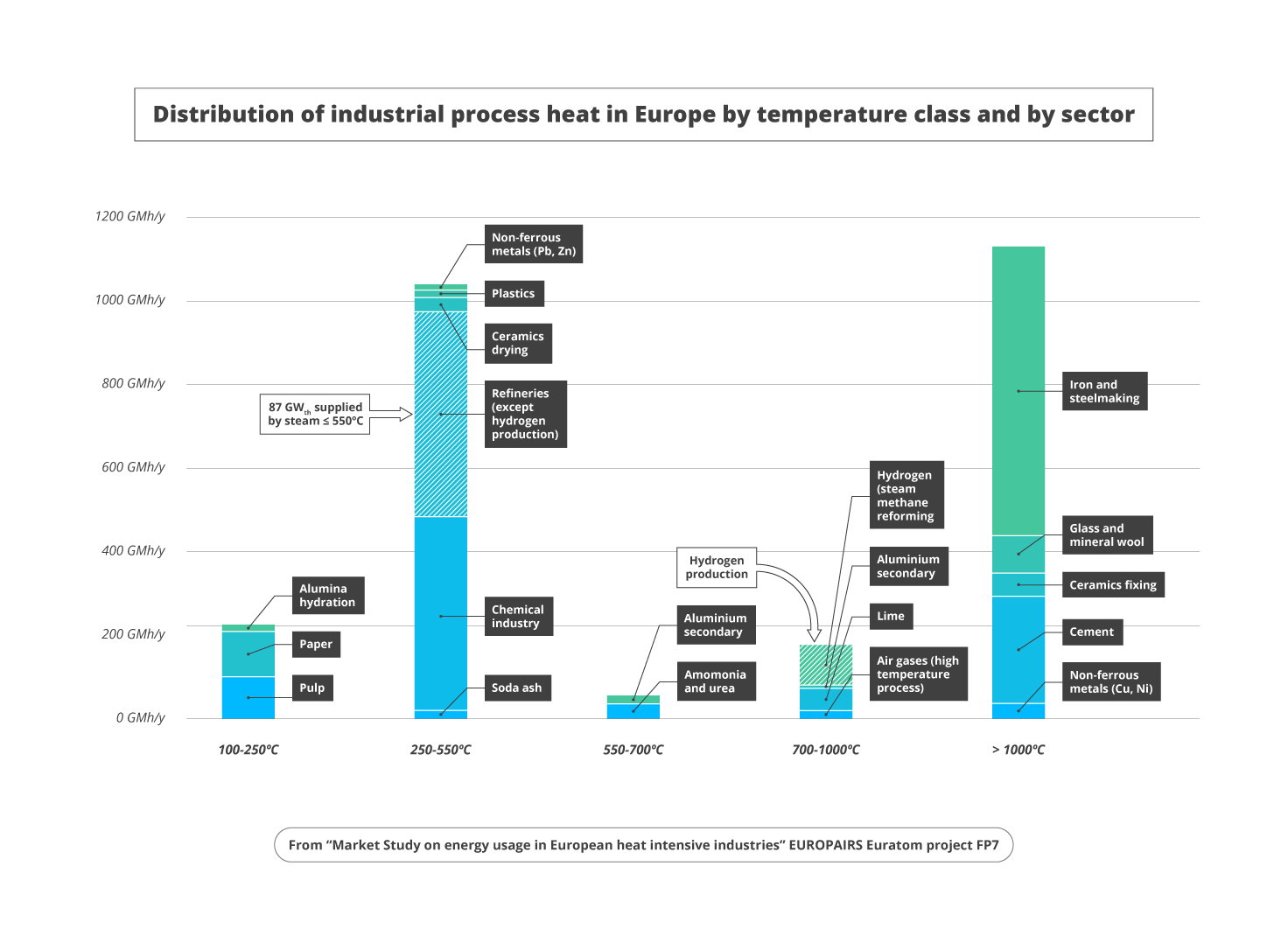
Main stakeholders
Nuclear vendors
Investors
Research centers
Governments
Main outputs
Identified supply chain
Qualified components
Identified sites for demonstration (in the USA and in Europe)
Operator/end-users partnership for construction and operation
Nuclear cogeneration & HTGRs
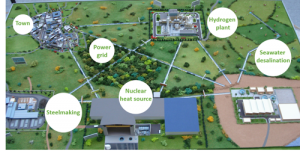 Cogeneration produces and uses heat and steam at the same time. Electricity produced by nuclear power plants generates a certain amount of heat which is usually unused.With nuclear cogeneration, this ‘lost heat’ is used in a variety of industrial applications: district heating and cooling, seawater desalination, process steam supply to industrial steam networks…
Cogeneration produces and uses heat and steam at the same time. Electricity produced by nuclear power plants generates a certain amount of heat which is usually unused.With nuclear cogeneration, this ‘lost heat’ is used in a variety of industrial applications: district heating and cooling, seawater desalination, process steam supply to industrial steam networks…
Cogeneration integrations may be different depending on the reactor type, fuel type and temperature level. Nevertheless, the specific use of nuclear energy for cogeneration provides many economic, environmental and efficiency-related benefits.
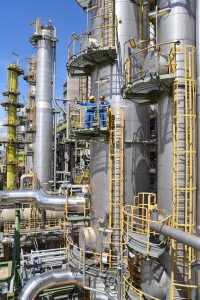 A High Temperature Gas-cooled Reactor (HTGR) operates under higher temperatures than other types of nuclear systems (presently from 750°C). Its high thermal efficiency combined with a robust structural design has made the HTGR a significant alternative for reducing the massive amount of radioactive materials produced during the nuclear fuel cycle. Moreover, safety levels are guaranteed with the HTGR technology: in case of a nuclear accident or extreme natural disaster, the system itself does not require any emergency power sources, cooling water or fluid, or human intervention.
A High Temperature Gas-cooled Reactor (HTGR) operates under higher temperatures than other types of nuclear systems (presently from 750°C). Its high thermal efficiency combined with a robust structural design has made the HTGR a significant alternative for reducing the massive amount of radioactive materials produced during the nuclear fuel cycle. Moreover, safety levels are guaranteed with the HTGR technology: in case of a nuclear accident or extreme natural disaster, the system itself does not require any emergency power sources, cooling water or fluid, or human intervention.
As a versatile Small Modular Reactor (SMR), the HTGR offers new possibilities for arid regions with limited water access, dense population areas or countries with no fossil fuel resources.
As a new market for the nuclear sector and with an industrial deployment expected to take in less than a decade, the HTGR is considered a mature technology. Indeed, several test reactors and industrial prototype plants for electricity production have been built: Peach Bottom, AVR, Fort-Saint Vrain, THTR…). China (who is currently building two HTGR demonstration plants), Indonesia, Kazakhstan and Saudi Arabia have already kicked off activities to develop an HTGR technology as well.
Considered to be a 4th Generation reactor (GEN IV), the HTGR can be co-located within new or existing industrial facilities. This application called cogeneration opens new perspectives to substitute fossil fuels necessary for energy production through the heat and steam generated by the nuclear power plant. Even higher temperatures required by some industrial applications could be reached in the near future using nuclear cogeneration.
 Today power generation, industry and transport represent the top three largest contributors to global greenhouse gases. According to the United States’ Energy Information Administration (EIA), a third of our world’s current electric power comes from coal, which represents 8 billion tonnes of highly-polluting coal burned every day.
Today power generation, industry and transport represent the top three largest contributors to global greenhouse gases. According to the United States’ Energy Information Administration (EIA), a third of our world’s current electric power comes from coal, which represents 8 billion tonnes of highly-polluting coal burned every day.
Meanwhile the global electricity demand is continuously increasing, regions such as Europe or the USA are more dependent on imported fossil fuel and natural gas, and the volatility of energy markets has risen, which is partly due to conflicts. That is why for both sides of the Atlantic, nuclear cogeneration could bring a genuine solution to energy security and environmental considerations established at the COP21 and the Paris Agreement (i.e. to keep the global temperature rise this century well below 2°C and limit the temperature increase even further to 1.5°C.)
Who we are
Nuclear Cogeneration Industrial Initiative (NC2I)
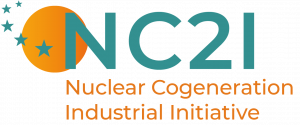 Established in 2011 as one of the three pillars of the European Sustainable Nuclear Energy Technology Platform (SNETP), the European Nuclear Cogeneration Industrial Initiative (NC2I) aims to demonstrate an innovative and competitive energy solution for the low-carbon generation of heat and electricity produced by nuclear energy. NC2I counts 28 members: CEA, Chalmers, CVREZ, EDF, EDF Energy, Energorisk, ES Group, Fortum, Framatome F, Framatome G, HTR, IFE, IZFP, Jacobs, JAEA, JRC, LEI, MTA EK, NCBJ, NINE, NNL, NRG, Nucadvisor, Nuccon, SSTC NRS, Tractebel, UJV Rez, VTT, Westinghouse.
Established in 2011 as one of the three pillars of the European Sustainable Nuclear Energy Technology Platform (SNETP), the European Nuclear Cogeneration Industrial Initiative (NC2I) aims to demonstrate an innovative and competitive energy solution for the low-carbon generation of heat and electricity produced by nuclear energy. NC2I counts 28 members: CEA, Chalmers, CVREZ, EDF, EDF Energy, Energorisk, ES Group, Fortum, Framatome F, Framatome G, HTR, IFE, IZFP, Jacobs, JAEA, JRC, LEI, MTA EK, NCBJ, NINE, NNL, NRG, Nucadvisor, Nuccon, SSTC NRS, Tractebel, UJV Rez, VTT, Westinghouse.
NGNP Industry Alliance
 Created in response to the 2005 US Energy Policy Act, the Next Generation Nuclear Plant (NGNP) Industry Alliance is an international consortium promoting the development of a commercial HTGR technology. It gathers industry-leading members including potential end-users, nuclear operators, industrial suppliers and nuclear technology companies: AREVA, Dow Chemical Company, Petroleum Technology Alliance Canada, Westinghouse Electric Company…
Created in response to the 2005 US Energy Policy Act, the Next Generation Nuclear Plant (NGNP) Industry Alliance is an international consortium promoting the development of a commercial HTGR technology. It gathers industry-leading members including potential end-users, nuclear operators, industrial suppliers and nuclear technology companies: AREVA, Dow Chemical Company, Petroleum Technology Alliance Canada, Westinghouse Electric Company…



